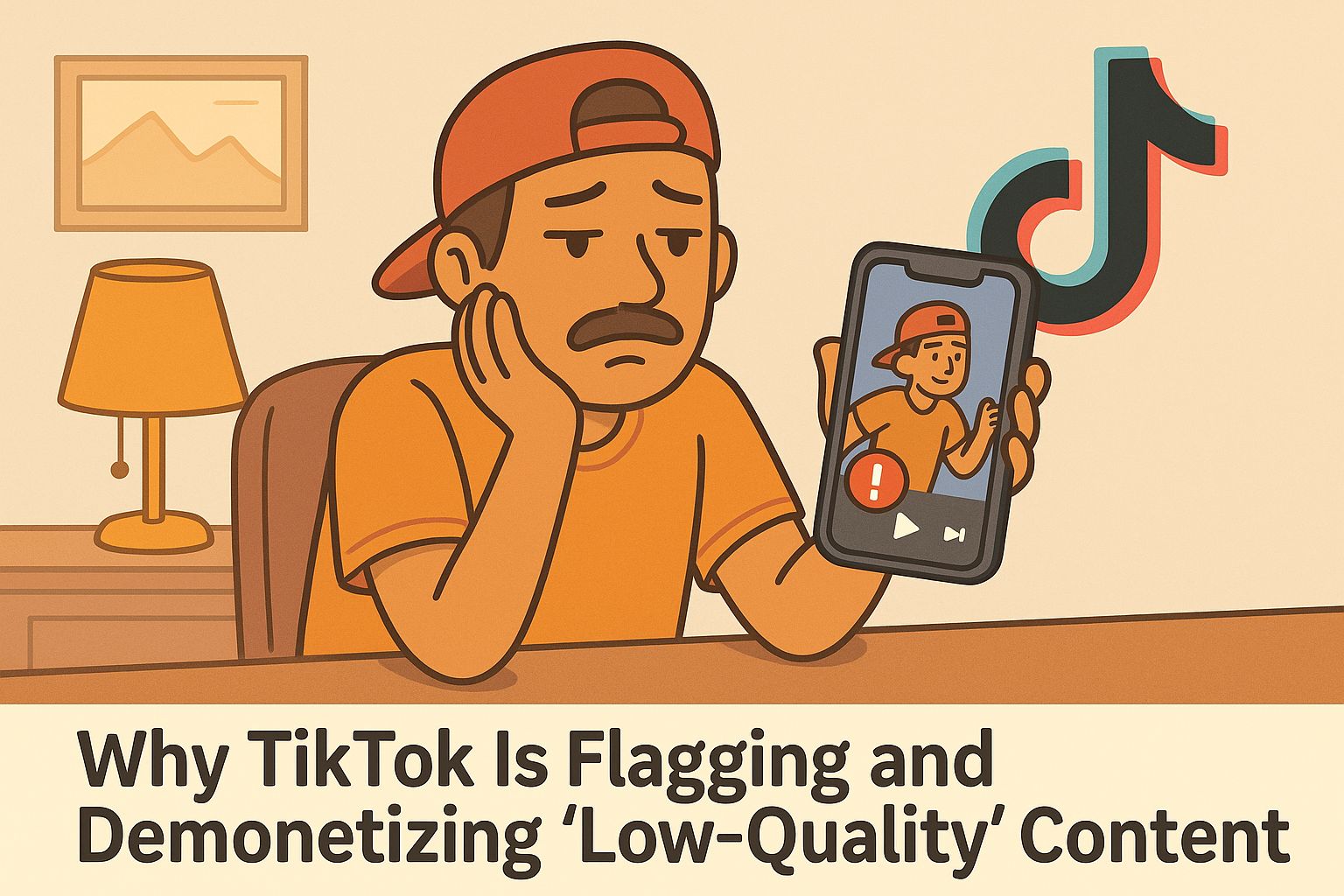The Real Reason TikTok Says Your Content is Low Quality
You put hours into editing. The video takes off. Views are climbing, engagement is strong… and then you get hit with this:
“Your video has been disqualified from monetization due to low quality or unoriginal content.”
It’s frustrating. Especially when you know you didn’t just repost someone else’s clip. You made this. It was yours. And now the payout is gone, the appeal was denied, and TikTok won’t explain what “low quality” even means.
You’re not alone—and you’re not crazy. This happens a lot more than TikTok likes to admit.
Here’s what you’ll learn in this article:
-
What “low quality” or “unoriginal” actually means on TikTok
-
Why it often happens when payouts are high
-
The types of videos most at risk of being flagged
-
What to do when your appeal is denied
-
Smart ways to structure your videos to avoid disqualification
-
How other creators are adjusting—and what you can do to protect your earnings
What TikTok Means by “Low Quality” or “Unoriginal”

The terms sound clear, but TikTok applies them vaguely.
A “low quality” video might mean:
-
It’s blurry or poorly lit
-
It uses heavy filters that obscure the content
-
It has no clear storytelling or structure
But more often than not, it means:
“We don’t want to pay for this kind of content right now.”
“Unoriginal” is even trickier. You can record yourself, add commentary, even cut the video creatively—and still get flagged. Why? Because if TikTok’s system thinks the core footage was pulled from somewhere else, you’re in trouble.
That includes:
-
Gaming clips from popular titles (even if you recorded it yourself)
-
Screen recordings
-
Duets and reactions
-
Anything that resembles a meme or trending edit
The system isn’t great at nuance. Even if you added your voice, music, and reactions—it might still get marked as “not original enough.”
Why This Happens When Views—and Payouts—Climb
Let’s not pretend this part is a coincidence.
Plenty of creators have noticed that disqualifications tend to happen only after a video starts earning real money. At first, the post is fine. It gains views. Then suddenly: disqualified.
It doesn’t always mean the content changed or violated anything.
It just means your payout was about to cross a threshold—and that’s when TikTok reviews the post.
The timing is suspicious. The higher the RPM, the more scrutiny your post gets. And creators who appeal often get copy-paste responses with no real explanation. Most appeals are denied, and there’s no escalation process.
What Kinds of Videos Are Most at Risk

Some content types are magnets for disqualification—no matter how much effort you put into them.
Here’s what TikTok tends to flag most often:
-
Gaming clips, especially from mainstream titles like Fortnite, Minecraft, or GTA—even if you recorded the footage yourself
-
Screen recordings (tutorials, tech content, app walkthroughs)
-
Reaction-style videos where the original video takes up most of the screen
-
Voiceovers or compilations that use stock footage or memes
-
Trend-based edits with minimal context or commentary
These formats aren’t banned, but they’re closely watched. If the algorithm thinks you’re not adding something substantial, you’re on thin ice.
Even creators who record original commentary or reactions get hit—especially when the video goes viral.
What to Do When Your Appeal Gets Denied
TikTok gives you one chance to appeal. And most creators say it’s basically automated.
If your appeal is denied, you can’t re-submit it. There’s no follow-up. No support ticket. No human to talk to.
Here’s what you can do instead:
-
Analyze what part of the video might’ve triggered the flag—screen content, visuals, or reused audio
-
Repost a modified version with more personal footage or commentary layered in
-
Avoid reposting it as-is—it’ll likely get flagged again
-
Keep screenshots of your analytics before the disqualification in case you need proof for external inquiries (it’s rare, but some creators have used this when contacting managers or reps)
It sucks, but once the appeal is denied, you’re better off adjusting your next upload than trying to fix the current one.
How to Structure Your Videos to Avoid Disqualification
If you’re in the Creator Rewards Program, assume every video is being scanned for red flags.
Here’s how to stay safe:
-
Start your video with your face or voice in the first few seconds
-
Include on-screen narration or a unique visual element that clearly shows it’s yours
-
Avoid letting screen recordings or game footage run uninterrupted
-
Add cuts, transitions, and personal context throughout—not just at the start or end
-
Use TikTok’s native tools (text overlays, effects, filters) to show it’s not reused content
Think of it this way: the more obvious it is that you made this for TikTok—and not repurposed it from elsewhere—the better your chances of keeping it monetized.
How Creators Are Adjusting (and What You Can Do Too)
This system isn’t fair, but creators are adapting.
Some are:
-
Shifting to narrative formats that showcase more personality
-
Moving away from high-risk categories like screen-recorded tech tutorials
-
Focusing on talking-head explainers, behind-the-scenes content, or “day in the life” posts
-
Using tools like Blaze AI to plan content variations that stay original while hitting the same trends
It’s annoying to work around a system that doesn’t always explain itself. But staying in the program—and getting paid—means learning how to feed the algorithm exactly what it wants.
